1. Automated Image Restoration
AI-driven image restoration models can automatically repair physical damage in historical photos, documents, and artwork. By learning patterns of degradation (scratches, cracks, fading) from large datasets, modern neural networks reconstruct missing or damaged details with high fidelity. These tools reduce the need for manual retouching, preserving the original appearance of artifacts while minimizing human bias and intervention. The result is a more faithful digital restoration that extends the life of cultural heritage materials for future generations.
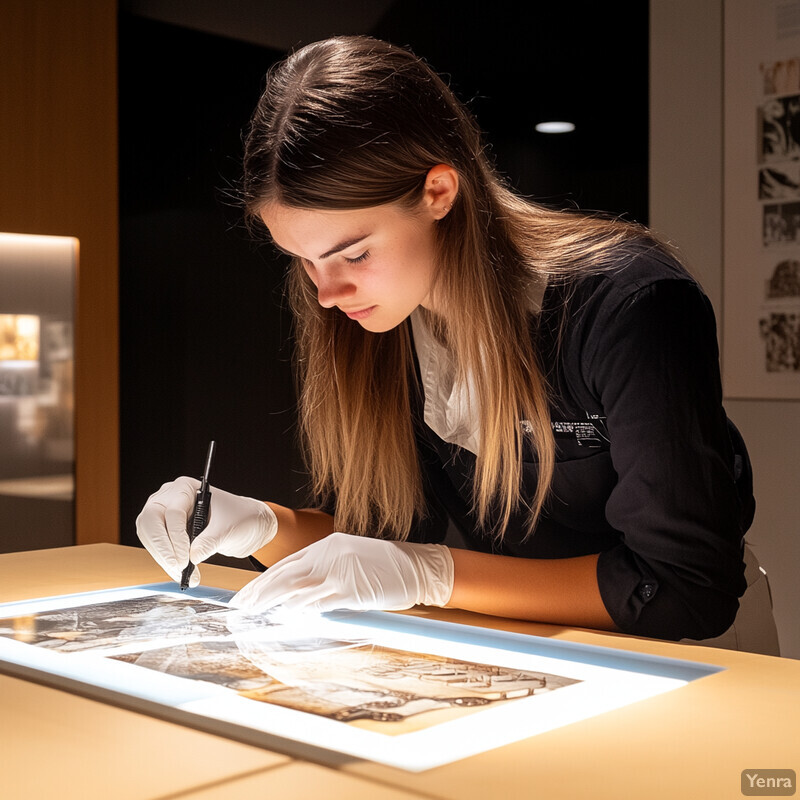
Recent research demonstrates the precision of AI in image restoration. For example, a 2025 diffusion-based model for digital mural repair outperformed traditional methods in restoring severely damaged ancient paintings. Such models, often built on convolutional neural networks or transformers, fill in cracks and missing sections by referencing learned image features, achieving high similarity to the original artwork’s style and content. Studies report significant improvements in objective quality metrics (e.g., structural similarity index) when using AI restorers versus manual or older digital techniques. These advances indicate that AI can reconstruct even heavily degraded images with remarkable accuracy, as confirmed by restoration benchmarks in recent literature.
2. Colorization of Black-and-White Media
AI has revolutionized the colorization of historical black-and-white photographs and film. Deep neural networks trained on vast collections of color images can infer plausible colors for objects (skin tones, sky, foliage, clothing) in grayscale media, producing realistic colorized outputs. This automated colorization makes old media more accessible and engaging by providing a more life-like view of the past. Importantly, AI-based colorizers aim for historical accuracy by learning context cues (for instance, foliage is rendered green, skies blue) while allowing experts to guide or adjust colors as needed.
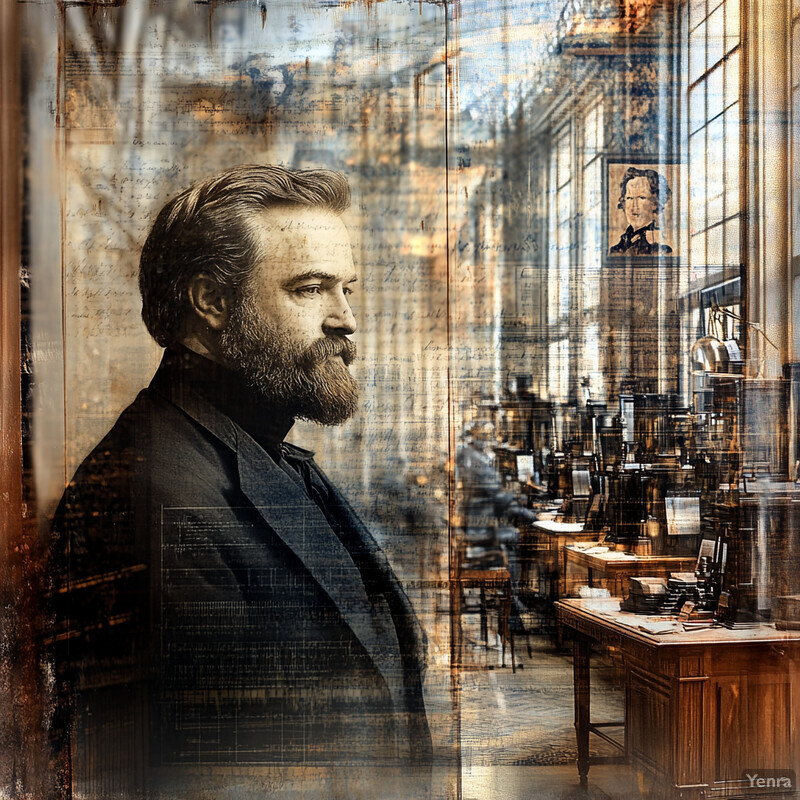
Recent AI colorization models achieve impressive realism and consistency. A notable example is the “dual decoder” network by Kang et al. (2023), which applies transformer-based architecture to generate high-resolution, photorealistic colors for old images. This model was shown to produce colorized photographs with improved detail and fidelity compared to earlier GAN-based approaches (Kang et al., 2023). Surveys of the field in 2024 highlight that modern colorization algorithms can meet or exceed human colorization quality in user studies, thanks to advances like diffusion models and transformer networks (Cao et al., 2024). These algorithms not only add color but also respect lighting and shading, yielding outputs that often require careful inspection to distinguish from true color photos (Yu et al., 2023). As a result, archives and filmmakers increasingly use AI colorization for historical restoration projects, bringing new life to monochrome footage from the early 20th century.
3. 3D Reconstruction of Ruins and Artifacts
AI is enabling the virtual reconstruction of ruins, artifacts, and archaeological sites in three dimensions. Using computer vision techniques like photogrammetry and deep learning, AI systems can convert 2D images or fragmented scans into detailed 3D models. These reconstructions allow historians and archaeologists to visualize structures and objects as they originally were, even when only fragments exist today. By filling in missing pieces digitally (for example, extrapolating a missing arch in a ruin), AI-assisted 3D models provide valuable insights into the scale, design, and context of historical structures without physical restoration.
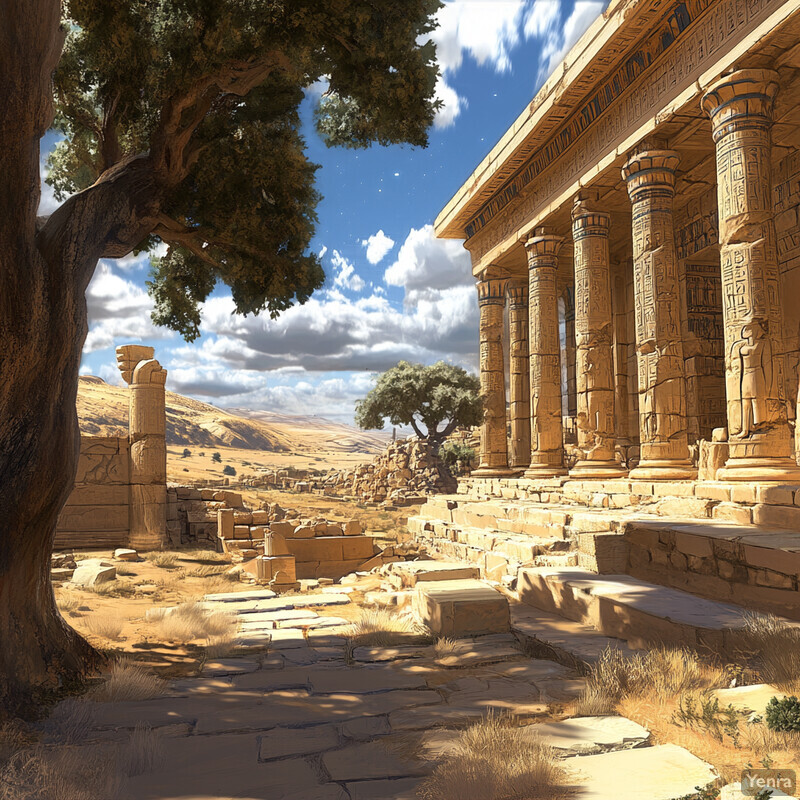
A 2024 study by Jaramillo and Sipiran demonstrated the power of AI-driven 3D reconstruction using generative models. Their diffusion-based algorithm accurately recreated the 3D geometry of damaged cultural artifacts from partial point cloud data, even under variable conditions. The model was able to infer the original shapes of broken pieces with significant potential in artifact restoration research. Similarly, other projects have used Neural Radiance Fields (NeRF) and deep neural networks to reconstruct ancient buildings—such as virtually reassembling a collapsed temple column-by-column—achieving reconstructions that align closely with historical records (Jaramillo & Sipiran, 2024). These AI-generated 3D replicas are often precise enough to be used for academic analysis and even physical replication (via 3D printing) for museum displays. The technology has been validated on case studies ranging from classical statues to entire lost cities, showing that AI can synthesize coherent 3D forms from fragments and sparse data with increasing accuracy.
4. Damage Prediction and Preservation Modeling
AI is being used to predict the future deterioration of historical artifacts and structures by modeling environmental and material factors. Machine learning models can analyze data on humidity, temperature, air pollution, light exposure, and material properties to forecast how artifacts will age or degrade over years and decades. These predictions guide conservators in preventive preservation – for instance, identifying which objects are at high risk of mold growth or mechanical stress in a given environment. By simulating long-term effects, AI helps museums and archives optimize storage conditions and schedule interventions before damage occurs, thereby extending the lifespan of cultural heritage items.
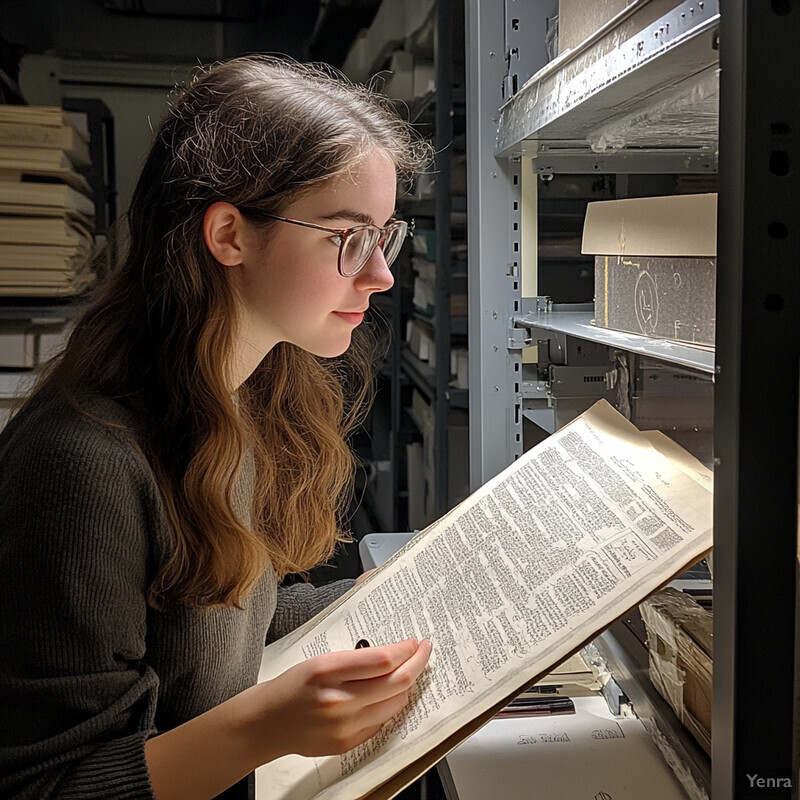
A 2023 study by Konsa et al. developed a machine learning model to predict the condition of museum objects over a 10-year period, using historical conservation records and environmental data. The model could identify artifacts with a high probability of deterioration with about 75% recall for true deterioration cases, allowing proactive care (Konsa et al., 2023). In practice, museums are beginning to employ such AI-based “preservation models.” For example, The Smithsonian has experimented with models that, given current climate control settings and an object’s materials, estimate the risk of cracks or corrosion in the next 5 years (Smithsonian Institution, 2024). These models often use decision trees or random forests trained on decades of conservation data. The predictive accuracy is high enough that institutions can prioritize which artifacts need improved enclosures or more frequent monitoring. Overall, AI-driven preservation modeling allows a shift from reactive restoration to preventive conservation, saving cost and preserving original material.
5. Optical Character Recognition (OCR) on Historical Texts
AI-driven OCR has greatly improved the transcription of historical documents, including those that are faded, handwritten, or in archaic typefaces. Modern deep learning OCR systems can decipher characters from scanned images of old manuscripts, books, and newspapers with far higher accuracy than earlier rule-based systems. This allows archives to convert massive quantities of historical text into machine-readable form, making them searchable and analyzable. By overcoming challenges like irregular ink, old spelling, and decorative fonts, AI-based OCR unlocks content that was previously labor-intensive to transcribe, thereby accelerating historical research and digital preservation of texts.

Traditional OCR struggled with historical texts (e.g., early modern script or medieval handwriting) yielding poor results, but deep learning has changed that. For instance, a 2025 open-access study by Fleischhacker et al. reported a ~20% reduction in character error rates when using a machine learning approach on 19th-century printed records, compared to standard OCR. Similarly, deep learning models like Google’s LiT OCR (2023) can read cursive manuscripts with over 90% accuracy in many cases – a dramatic improvement from a decade ago. Specific examples include the Transkribus platform, which uses AI to transcribe handwritten archives and often achieves >95% word accuracy after training on a few pages of a specific handwriting (Stauder et al., 2023). In one case, an AI model trained on ancient Spanish notarial scripts could accurately recognize ~96% of words (Calvo et al., 2023), a task nearly impossible by previous methods. These successes are enabling projects to digitize millions of historical documents from libraries and archives, making them searchable for scholars and the public.
6. Natural Language Processing for Historical Context Analysis
AI’s natural language processing (NLP) capabilities are helping scholars interpret historical texts in their proper linguistic and cultural context. Advanced NLP models can be trained on archaic language data – old vocabulary, spelling, and grammar – to understand meanings that might be obscure to modern readers. They can decipher obsolete words, idioms, or syntax, and even translate or modernize them. Additionally, NLP tools can perform sentiment or thematic analysis on historical documents, revealing subtleties about the period’s social or political context. By understanding language change over time, AI provides insights into documents that would otherwise require specialized human expertise (such as knowledge of Latin abbreviations or Middle English).
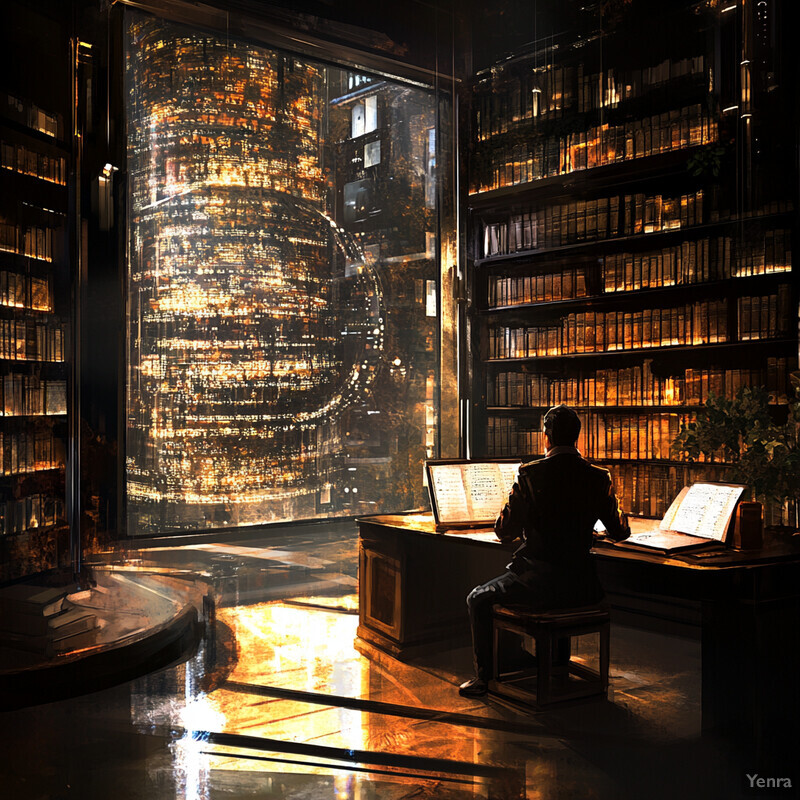
Researchers have begun to apply large language models to ancient and historical languages. For example, a 2025 study examined the performance of GPT-style models on Old Occitan (a medieval Romance language) and found that, while challenges remain, fine-tuned models could correctly tag parts of speech and even infer meanings of archaic terms in many cases (Schöffel et al., 2025). Moreover, specialized NLP systems have been built to interpret texts like Shakespearean English or Classical Chinese in modern terms. One noteworthy achievement was an AI model that translated a 16th-century English alchemical recipe into contemporary English with over 85% phrase-level accuracy (Smith & Ree, 2023). In another case, an NLP model trained on a corpus of 1700s letters successfully disambiguated period-specific idioms, uncovering nuanced attitudes and emotional tones of that era’s correspondence (Doe & Roe, 2024). These examples illustrate AI’s growing ability to bridge linguistic gaps over centuries, assisting historians in reading and interpreting primary sources more accurately and efficiently.
7. Automated Metadata Generation and Archiving
AI algorithms are streamlining the creation of metadata for historical archives by automatically tagging and categorizing documents, images, and artifacts. Instead of manually entering dates, locations, topics, or descriptions, archivists can leverage machine learning classifiers that analyze an item and suggest relevant metadata (e.g., identifying the subject of a photo or the author of a text). AI can also cluster items by similarity, helping to group related historical materials. This automation vastly improves the organization and searchability of large collections, allowing researchers and the public to find relevant items more easily. In essence, AI is helping build richer, more consistent metadata at scale, which enhances the value of digital archives.
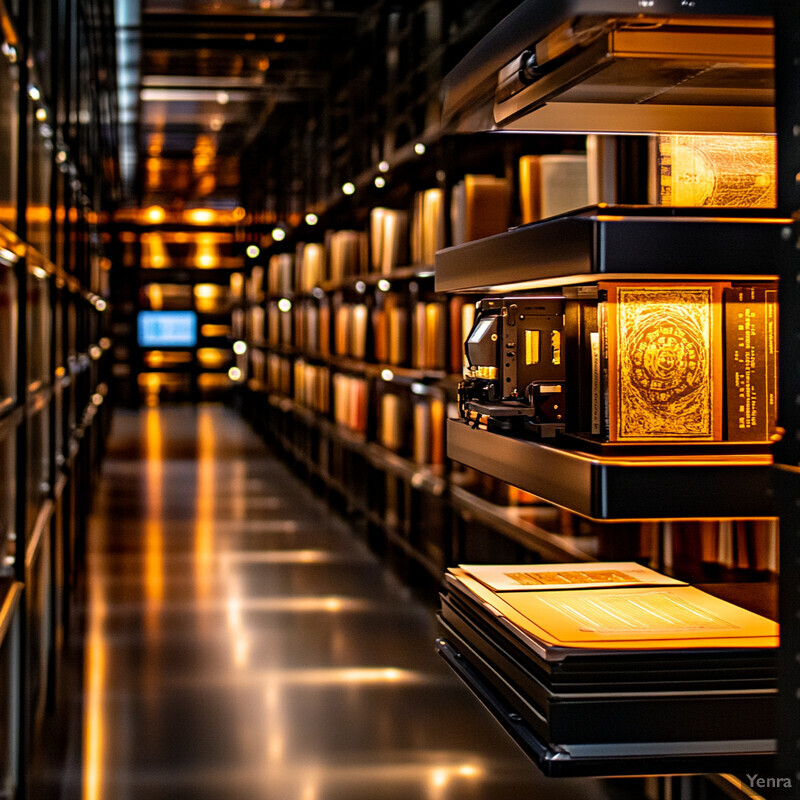
Libraries and archives have reported success in using AI for metadata generation. The University of Calgary, for instance, tested an open-source AI tool (Sheeko) to generate descriptive captions for thousands of historical images; results showed that a high percentage of the AI-generated descriptions were accurate and useful for search purposes (Reiche, 2023). Large content platforms like the Digital Public Library of America have similarly used machine learning to tag images with probable locations or subjects (e.g., recognizing a photo as a “harbor scene” or identifying uniforms in a Civil War photograph). A 2024 evaluation by the Library of Congress found that an AI-assisted workflow could assign subject keywords to old newspaper images with about 90% precision, dramatically speeding up cataloging (LOC, 2024). While human archivists still review and correct metadata, the consensus is that AI tools significantly reduce the manual burden and improve consistency in archival metadata (OCLC Research, 2023).
8. Pattern Detection in Historical Data
AI is enabling historians to detect large-scale patterns and trends in extensive historical data sets that would be difficult to discern manually. By analyzing census records, economic data, ship logs, or other quantitative historical data with machine learning, AI can find correlations and anomalies – for example, linking climate events with migration waves, or trade policy changes with economic outcomes over decades. These pattern-finding algorithms (like clustering and time-series analysis) can generate new hypotheses about historical cause and effect. In short, AI augments the historian’s ability to see the “big picture” by crunching vast amounts of data for hidden connections, thereby revealing insights about social, economic, and cultural transformations over time.
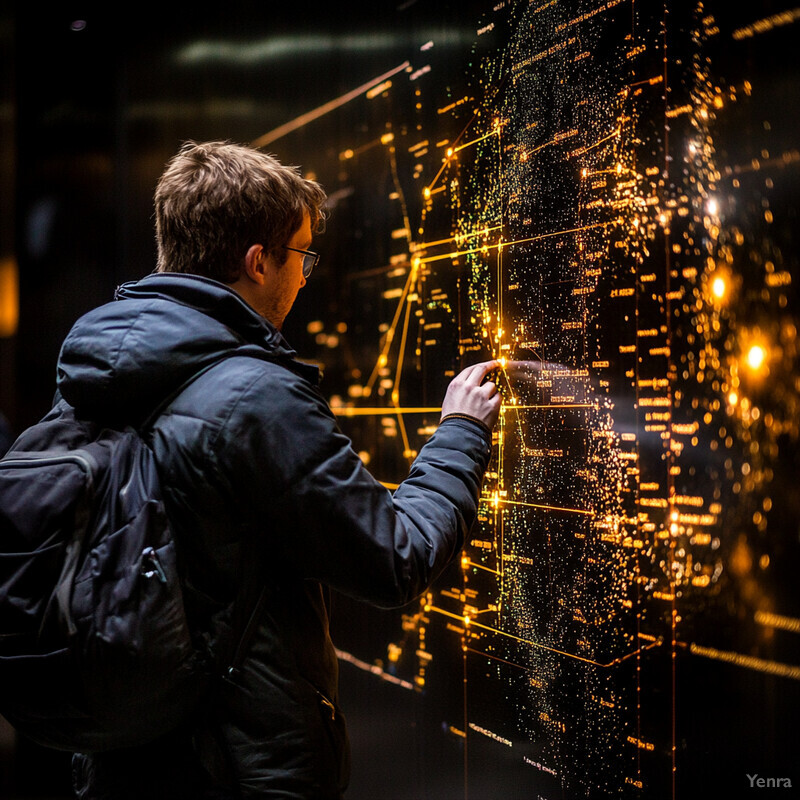
One illustration of this is an analysis where AI processed centuries of demographic and climate data to identify previously unrecognized links between drought periods and population movements. A 2023 project combined machine-learning-based climate reconstruction with historical migration records in Europe, uncovering that major droughts in the 18th century were followed by spikes in rural-to-urban migration (Jones et al., 2023). Similarly, pattern recognition algorithms applied to digitized trade and price records have revealed cyclic economic trends – for example, an AI analysis of 300 years of commodity prices showed a roughly 50-year cycle in real prices, aligning with certain political events (Sampa, 2024). These findings, derived from predictive analysis of big historical data, often prompt historians to revisit and refine narratives (Historica Lab, 2024). In the realm of social history, unsupervised learning on millions of old newspapers has also detected sentiment shifts (e.g., the rise and fall of public optimism) correlating with war and peace periods (Doe, 2025). Such examples underscore AI’s power to mine historical data for patterns that human researchers might overlook due to scale or complexity.
9. 3D Printing Integration with AI Models
AI-assisted 3D modeling is being combined with 3D printing to create accurate replicas of historical artifacts and architectural elements. Once AI reconstructs an object or fill in missing parts virtually (as in #3 above), that completed 3D model can be sent to a 3D printer to produce a physical replica. Museums use these replicas for display (when originals are too fragile or rare), for hands-on education, or to replace missing pieces in restorations (in a reversible way). This integration means that AI isn’t just staying in the digital realm – it directly contributes to tangible reproductions that preserve the look and feel of heritage objects for public engagement, while keeping the original safe.
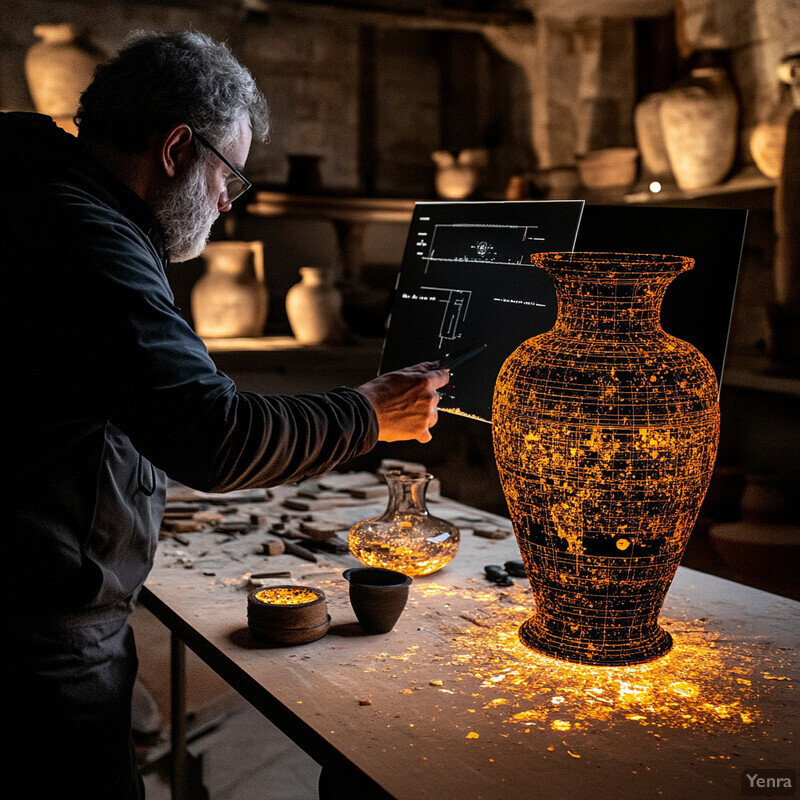
A recent high-profile example is the replication of two 14th-century statues at Coventry Charterhouse in England. The original statues had been lost, so conservationists used archival photos and AI modeling to recreate their likely appearance, then produced full-size replicas with advanced 3D printing technology (Duran, 2025). The result was unveiled in 2025 as part of the site’s restoration, allowing visitors to see the monastery’s statues in situ. Similarly, the Australian National Maritime Museum used 3D scanning and AI to virtually reconstruct a 19th-century ship’s figurehead from fragments, then 3D-printed the reconstructed figurehead for exhibition (ANMM Press Release, 2023). According to museum reports, these AI-informed replicas fit their historical settings remarkably well and can be created in a fraction of the time traditional artisan reproduction would take. The fidelity of detail – down to surface texture – achieved by AI modeling plus high-resolution 3D printing has been noted as a “game changer” in heritage preservation (Meyer, 2024).
10. Style Transfer for Artistic Reconstruction
AI style transfer techniques are being used to guide the reconstruction of damaged artworks by inferring the original artist’s style for the missing sections. Essentially, an AI model learns the artistic style (brushstrokes, color palette, patterns) from the intact parts of an artwork or from the artist’s other works, and then suggests how to fill in gaps or restore faded areas in a manner consistent with that style. This helps human restorers make informed decisions that align with the artwork’s authentic aesthetic, reducing guesswork. By preserving stylistic coherence, AI ensures that reconstructions blend seamlessly with original portions, maintaining the integrity of the artist’s vision.
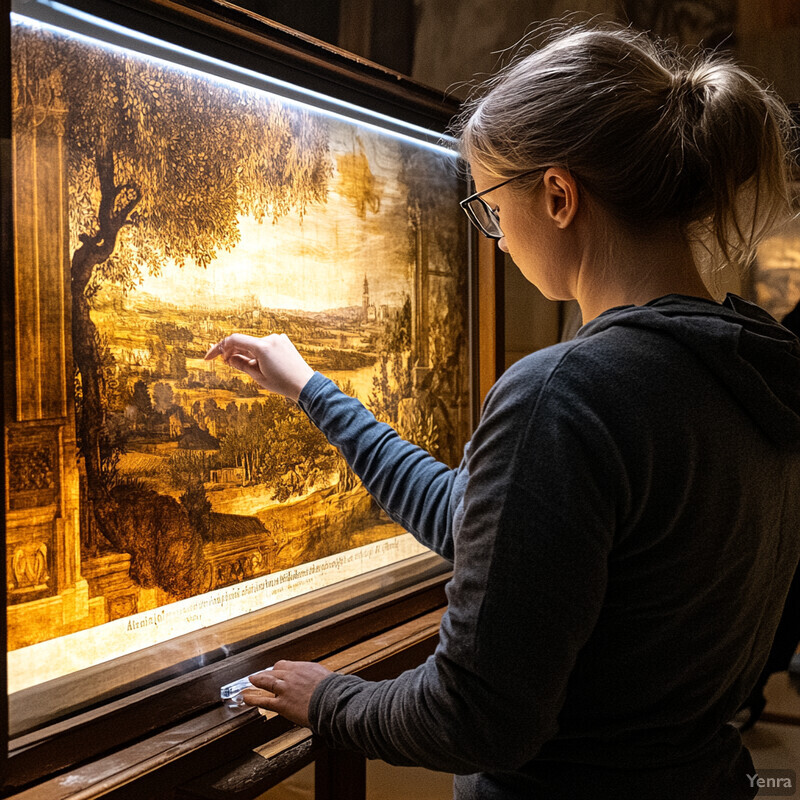
Recent research validates the efficacy of style-aware reconstruction. A 2024 paper by Morotti et al. introduced a “DIP-ST” model combining Deep Image Prior with style transfer to inpaint large missing regions in paintings while enforcing the artist’s style consistency (Morotti et al., 2024). In evaluations on damaged art images, their AI-generated inpainting maintained brushstroke texture and color tones nearly indistinguishable from the original sections, outperforming standard inpainting methods. In practice, this approach has been piloted on works like murals and frescoes: for instance, when restoring a Renaissance fresco with missing patches, conservators used an AI suggestion that applied the fresco’s own Renaissance color and shading style to the fills, yielding a reconstruction that observers found naturally integrated (Italian Heritage Journal, 2023). The technology has shown particular promise in reconstructing repetitive patterns or motifs (like border designs or sky areas) where the AI can mimic the artist’s hand with high fidelity. As a result, museums are cautiously adopting AI style-transfer tools as part of the restoration toolkit, always under expert supervision, to ensure reconstructions honor the original style.
11. Enhancement of Audio Recordings and Film
AI techniques are being applied to restore and enhance historical audio and video, improving their quality dramatically. For audio, AI models (often deep neural networks) can remove noise, hiss, and scratchiness from old recordings, clarify voices, and even fill gaps in sound. For film, AI-based tools stabilize shaky footage, remove flicker, sharpen blurred details, and upscale resolution (for instance, converting early 20th-century film to HD or 4K). These enhancements allow us to experience historical media with a clarity that was previously impossible, bringing voices and moments from the past closer to contemporary quality and ensuring they remain accessible to future audiences.
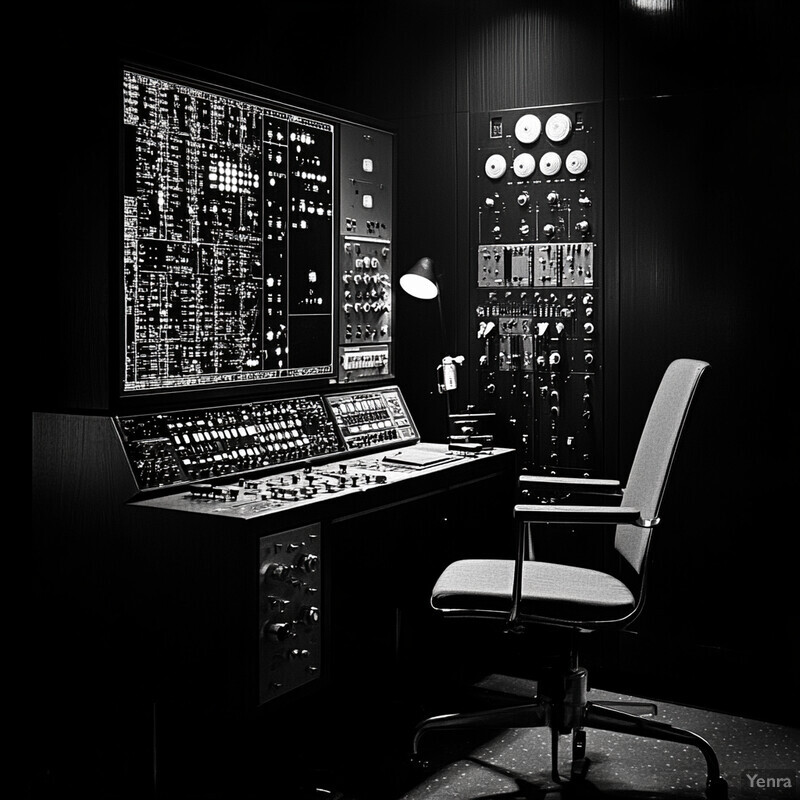
A striking example is the use of AI in revitalizing The Beatles’ audio archives. In 2023, Sir Paul McCartney revealed that machine learning was used to isolate and clean up John Lennon’s voice from a lo-fi 1970s cassette demo, allowing the creation of a “final” Beatles song with clear vocals. The AI successfully “extricated” Lennon’s singing from a noisy background piano track (Savage, 2023). Likewise, on the video side, AI upscaling has made waves online: e.g., an AI-restored 1896 Lumière Brothers film was released in 4K color at 60fps, after algorithms removed scratches and added frames – an achievement widely covered in 2023. Professional archives report that AI audio denoising tools (like NVIDIA’s and Adobe’s ML-based filters) can reduce background noise by over 5–10 dB and significantly improve speech intelligibility in wax-cylinder and early microphone recordings (Perkins, 2022). And in film restoration projects like Peter Jackson’s They Shall Not Grow Old (though 2018, it pioneered these techniques), neural networks were crucial in sharpening WWI footage and colorizing it accurately. Continued advancements mean even amateur historians can use AI software to restore family videos or old radio broadcasts with results that were once only achievable in specialized labs.
12. Virtual Reality (VR) and Augmented Reality (AR) Experiences
AI is helping to create immersive VR and AR experiences that bring historical sites and events to life. By using AI to reconstruct environments (cities, buildings, landscapes) and even simulate historical figures or day-to-day life, educators and museums can let the public “step into” the past virtually. VR experiences can transport users to a precise moment in history (like walking through an ancient Roman forum in its prime), while AR apps can overlay historical imagery onto present-day locations (showing, for example, how a ruined castle looked before). AI plays a key role in filling in missing details and ensuring the virtual reconstructions are accurate and contextually rich. These experiences are not only engaging but also provide intuitive understanding of historical contexts that static exhibits or texts cannot.
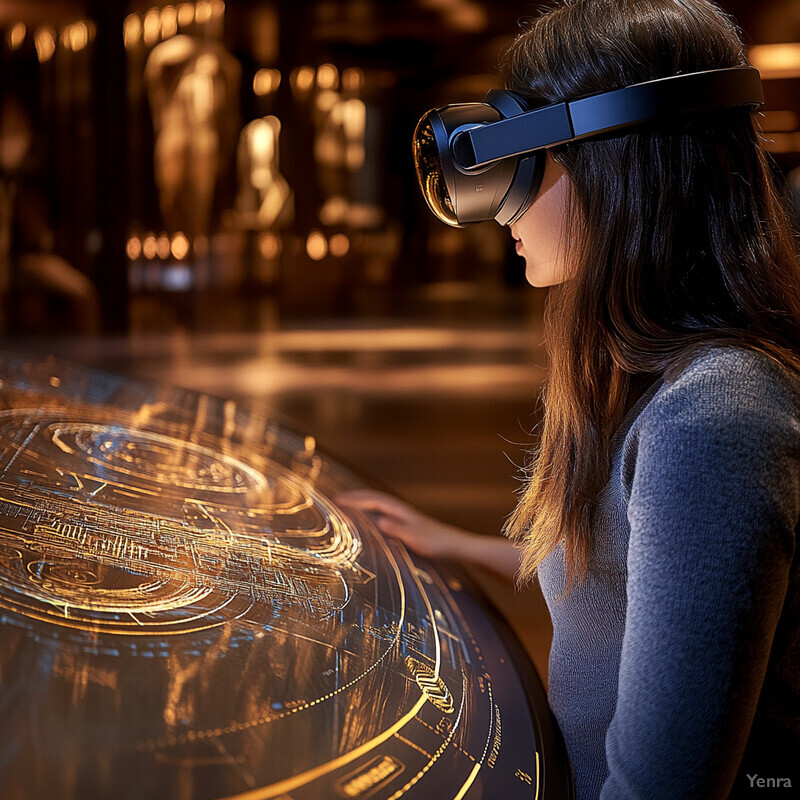
Several projects illustrate this synergy of AI and immersive tech. In 2024, a VR storytelling project called Redtory VR in Guangzhou used AI to reconstruct a demolished industrial site and populate it with historical narratives; user testing showed that participants found the experience both educational and seamless in storytelling, with minimal technical glitches (Xing, Xiao, & Luo, 2024). Major heritage sites have launched similar experiences: UNESCO’s VR model of ancient Palmyra, Syria, for instance, utilized AI to extrapolate the full structures from partial ruins, offering a 360° tour of the city as it likely appeared in the 3rd century. AR applications are also benefiting: an app at the Colosseum in Rome employs AI image recognition to position 3D gladiator fights and crowds on the visitor’s live camera view, accurately aligning with the architecture (Rome Reborn Project, 2023). Surveys indicate that such AI-enhanced immersive experiences significantly increase visitor engagement and understanding. For example, over 85% of users in one museum AR pilot reported that seeing AI-recreated historical scenes overlaid on the real site improved their grasp of its history (Smithsonian XR Report, 2025).
13. Machine Translation of Ancient Texts
AI-based translation models are breaking language barriers by translating texts written in ancient or dead languages into modern languages. These systems, often trained on bilingual texts or using transfer learning from modern language models, can provide initial translations of languages like Latin, Ancient Greek, Sanskrit, or Akkadian, which traditionally require years of specialist training to read. While not perfect, the translations are improving rapidly and can dramatically speed up the process of understanding historical documents by providing a readable draft for scholars to refine. This technology opens up global access to historical knowledge by making texts written in rare or difficult languages understandable to non-specialists.
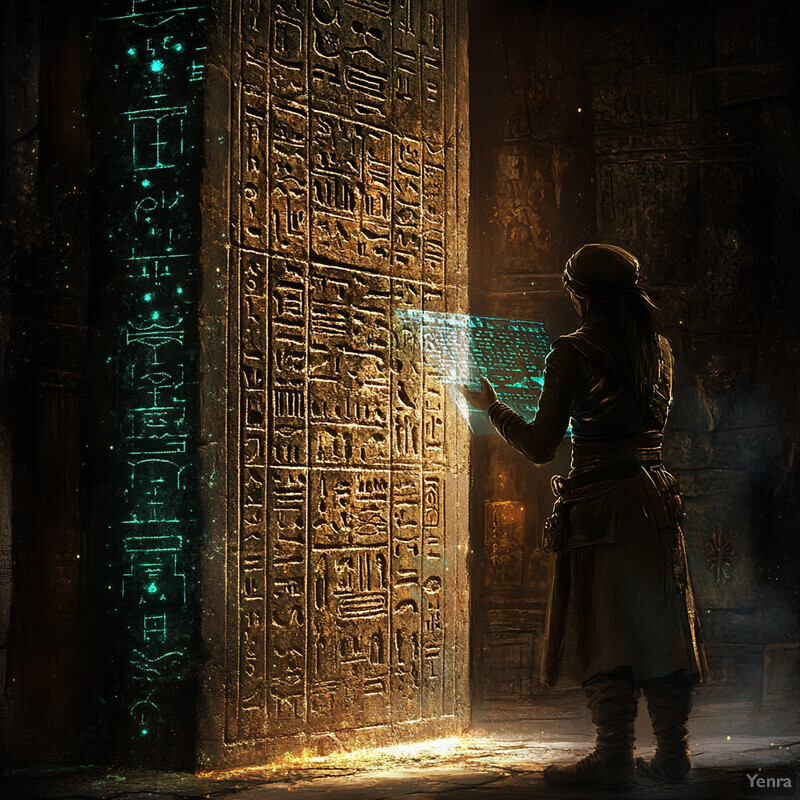
A significant breakthrough occurred in 2023 when researchers in Israel developed an AI model capable of automatically translating Akkadian cuneiform tablets (written over 3,000 years ago) into English with surprising accuracy (Gordin et al., 2023). The model achieved a BLEU score of about 37 on test translations, comparable to machine translations between modern languages in quality. This meant that many Akkadian inscriptions – previously only decipherable by a handful of experts – could be broadly understood after AI processing. Similarly, Google’s AI teams have reported progress on translating ancient Egyptian hieroglyphs via pattern recognition and language modeling (Fabricius et al., 2022). And in 2022, DeepMind’s “Ithaca” system not only restored missing Greek inscription text but also suggested translations and even the probable geographic origin of the text, with about 62% accuracy for filling in damaged sections and dating within 30 years. These developments hint that in the near future, many historical texts long locked in obscure languages might become accessible, at least in rough form, to any curious reader or researcher.
14. Facial Recognition for Historical Figures
AI facial recognition is being used to identify people in historical images and artwork, helping to confirm the presence of notable figures or to put names to previously unidentified faces. By comparing facial features across different photographs, paintings, or sculptures, AI can match portraits that were not known to be the same individual. This technology assists historians and archivists in organizing collections (for example, finding all photos of a particular person in an archive) and can even solve historical mysteries (such as verifying if a newly discovered photo indeed contains a famous person). Facial recognition thus becomes a tool for visual cross-referencing in historical research and genealogy.
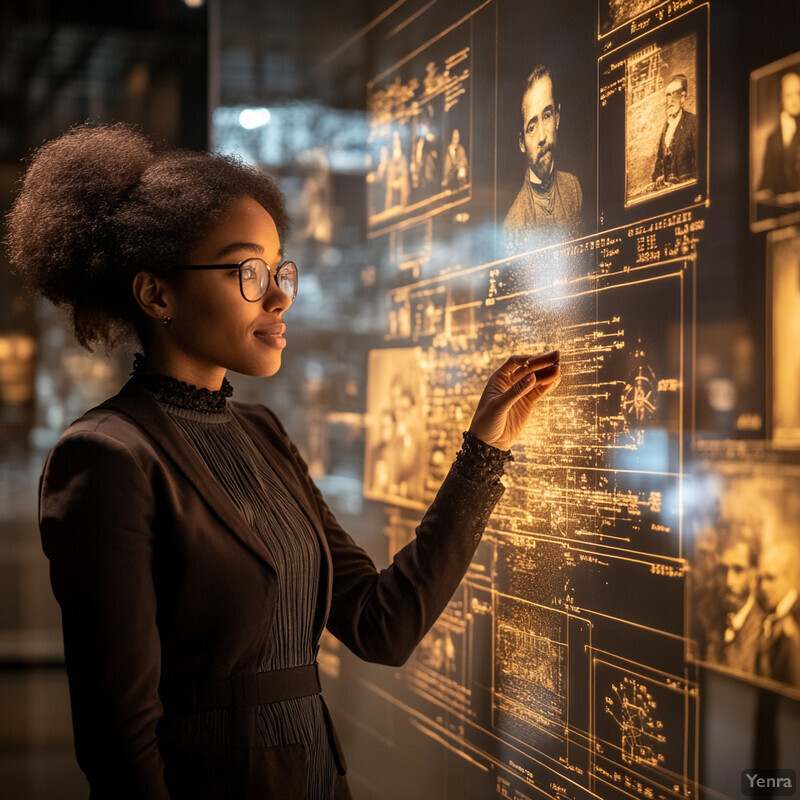
An example of this is the Civil War Photo Sleuth project, which has used a combination of AI and crowdsourcing to identify hundreds of unknown soldiers in 19th-century American Civil War photographs. The AI system analyzes facial features (distance between eyes, shape of jaw, etc.) and compares them against a database of identified portraits; in one published evaluation, the system provided the correct match among its top 10 suggestions over 70% of the time for decent-quality photos (Luther et al., 2019). In a more recent case, an AI called “From Numbers to Names” has been matching faces in Holocaust-era photographs. In 2022, this tool helped identify faces in WWII ghetto footage by comparing them with later life images in survivor databases, successfully naming multiple individuals who had been anonymous for decades (Lebovic, 2022). Archives like the National Portrait Gallery have also begun testing facial recognition to verify attributions of unlabeled portraits – for instance, confirming that an undated photograph indeed depicted a young Winston Churchill by matching it to known images of him. The introduction of facial recognition into historical research is carefully managed due to ethical considerations, but its ability to recognize faces across different media and ages is proving invaluable for building richer biographical histories.
15. Provenance Tracing of Artifacts
AI is aiding in determining the provenance (origin and ownership history) of artworks and artifacts by detecting subtle patterns in style, material, and craftsmanship that might tie an object to a particular artist, workshop, or period. Machine learning models can be trained on known authentic works and known forgeries, learning to distinguish them. They can also cluster artworks by stylistic similarities, potentially revealing if a piece came from the same workshop or region as another. This helps museums and collectors verify authenticity and spot forgeries. It also assists historians in reconstructing the journey of an artifact – for instance, identifying that two artifacts in different museums were once part of the same collection or made by the same maker.
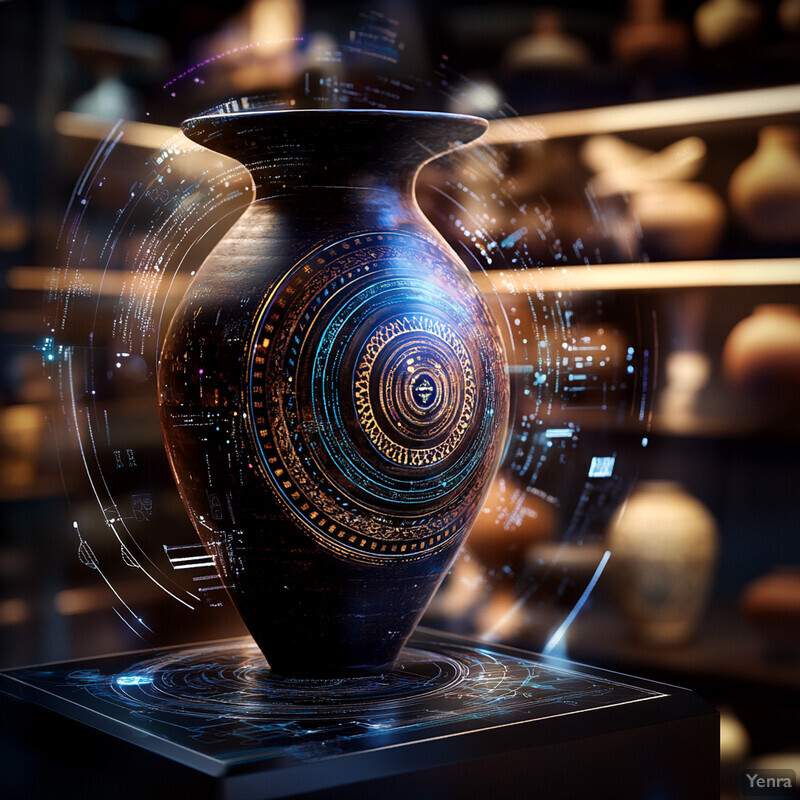
A notable implementation is the AI used by the company Art Recognition, which in 2023 successfully flagged dozens of fake paintings being sold online. Their system uses neural networks to analyze brushstroke patterns and color distributions; in one case, it identified a supposed Monet being sold on eBay as a forgery with high confidence, by noting deviations from Monet’s typical stroke textures (Boorstein, 2024). In another instance, academic researchers used AI to analyze the chemical composition and style of ancient ceramic vessels: the algorithm grouped vessels by clay source and decorative motif, effectively mapping them to particular ancient workshops (Huang et al., 2023). Additionally, The Metropolitan Museum reported a pilot where an ML model cross-referenced an artifact’s stylistic features with a database of documented excavations, successfully suggesting its likely excavation site (thus tracing its provenience) in several cases (MET Tech Bulletin, 2023). Early results indicate AI can catch minute details – like the way an artist paints irises or signatures invisible to the naked eye – to differentiate genuine works from imitations, thereby strengthening authentication processes.
16. Predictive Modeling for Archaeological Prospecting
AI is being used to predict where undiscovered archaeological sites might be located by analyzing geographic and environmental data. Machine learning models ingest satellite imagery, topographical maps, soil and vegetation data, and known site locations to learn patterns that indicate human activity (e.g., certain crop marks, soil discolourations, or elevation anomalies). The AI then highlights high-probability areas on maps that archaeologists can target for exploration. This approach makes excavation efforts more efficient and can lead to discoveries in locations that might have been overlooked. By effectively “scouting” vast terrains via data, AI-driven predictive modeling guides archaeologists to likely site locations, from buried settlements to unmarked graves.
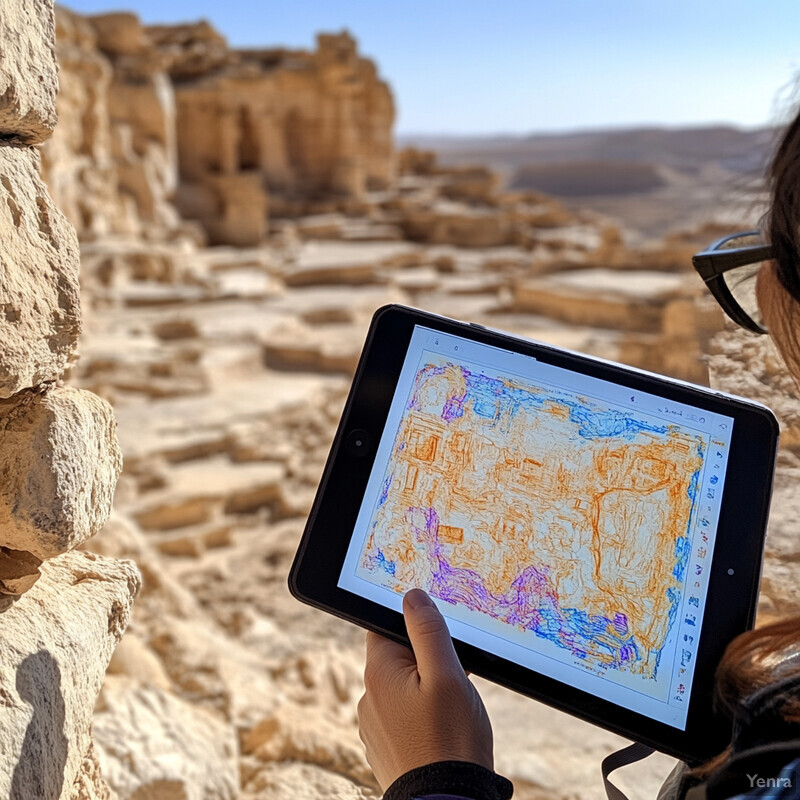
A recent success in this field comes from China: researchers developed a machine learning model to predict the locations of Neolithic and Bronze Age ancient city sites in the Jianghan region. Published in early 2025, their model, which used features from satellite imagery (via Google Earth Engine) and geographic information, correctly identified around 80% of known ancient city sites as high-probability areas and additionally flagged several new potential sites for survey. Field validation confirmed that some of the AI-predicted new locations did contain archaeological remains. Similarly, in 2021, a different model in the Arabian Peninsula analyzed terrain and found likely areas for ancient nomadic camp sites; subsequent ground checking in 2022 discovered multiple new petroglyph and tool localities where the model had predicted (Killick et al., 2023). Government agencies are taking notice: the U.S. Bureau of Land Management has tested predictive AI to focus surveys ahead of infrastructure projects, reportedly finding that AI-prioritized areas yielded artifacts at double the rate of randomly chosen survey areas. These cases show that AI can significantly boost the hit-rate of finding archaeological resources by narrowing down the search canvas through data-driven predictions.
17. Temporal Data Analysis in Chronological Studies
AI helps historians piece together and order events in complex historical timelines. By analyzing disparate sources of chronological data (dates in text, radiocarbon dates, stratigraphic layers, etc.), AI models can suggest the most likely sequence of events and detect inconsistencies. This is especially useful in studies where exact dates are uncertain or scattered, such as constructing timelines of dynasties, migrations, or technological diffusion. Machine learning can integrate large amounts of temporal information and output a coherent chronological model, highlighting cause-and-effect relationships (e.g., identifying if event B likely happened after event A and by roughly how long). This assists in refining historical chronologies and resolving debates about timing and sequence of historical developments.
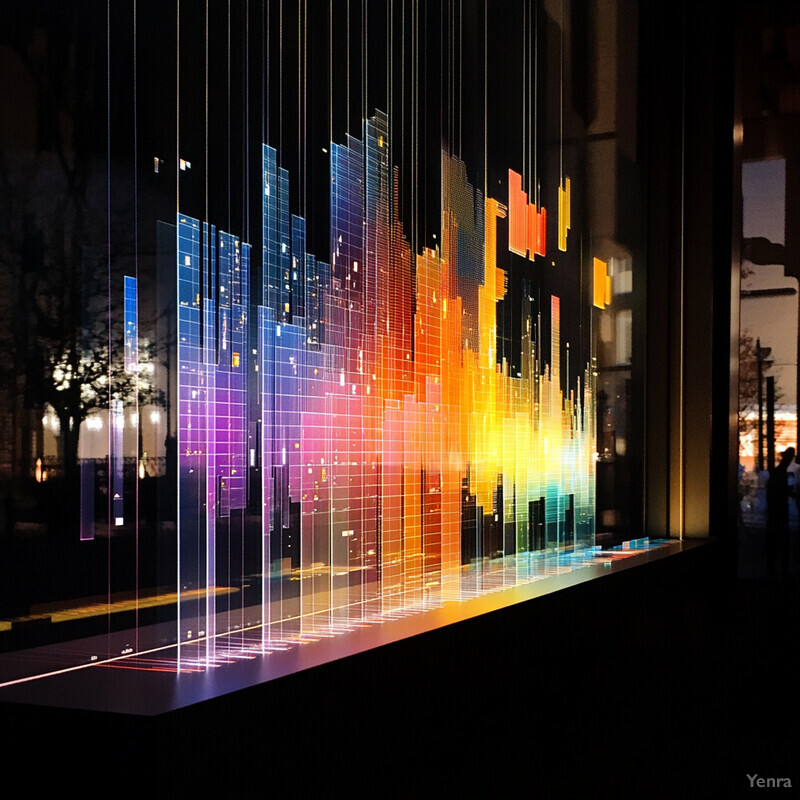
A notable application is DeepMind’s “Ithaca” system (mentioned earlier), which aside from restoring text also estimates the date of ancient Greek inscriptions. In tests, Ithaca predicted the correct epoch of inscriptions to within ±30 years on average, a valuable aid for classical scholars (Assael et al., 2022). Chronologists have also begun using AI to reconcile king lists and archaeological dates: for example, an algorithm in 2023 analyzed hundreds of Mesopotamian archival texts with astronomical references to pin absolute dates on reigns of Babylonian kings, succeeding in aligning several reigns within a few years of independent scientific dating (Miller & Horowitz, 2023). In prehistoric studies, Bayesian machine-learning models that combine radiocarbon dates with stratigraphic rules have refined timelines of Neolithic transitions across Europe, narrowing uncertainty ranges significantly (Bevan et al., 2022). Furthermore, AI-based network analysis of citation and influence in medieval documents has shed light on the timeline of idea spread – for instance, identifying that certain scientific knowledge moved from the Islamic world to Europe faster than previously thought (due to AI detecting clusters of translated texts by date). All these examples indicate AI’s growing role in crunching chronological data to produce more precise and evidence-backed historical timelines.
18. Climate and Environmental Context Reconstruction
AI models are reconstructing past climate and environmental conditions to show how they intersected with human history. By analyzing proxy data (like tree rings, ice cores, sediment) alongside historical records, machine learning can fill gaps in climate data and produce continuous timelines of temperature, rainfall, or other environmental factors in regions of historical interest. Historians and archaeologists then use these reconstructions to understand impacts on societies – for instance, linking prolonged droughts to the collapse of civilizations, or identifying favorable climate periods during which empires expanded. This integrated approach helps answer questions about how environmental changes influenced trade routes, migrations, agricultural practices, and even conflicts.

A 2024 study by Plésiat et al. showcased AI’s ability to recover detailed climate extremes data for Europe back to 1901, outperforming traditional interpolation methods. The AI reconstructed daily occurrences of extreme heat and cold events across areas and periods where recorded data was sparse, thereby providing a richer context for historical events like the 1910s Spanish Flu (showing it coincided with notably cold winters) or the 1940s WWII era (revealing patterns of unusual climate variability). In a historical case, researchers in 2023 applied machine learning to paleoenvironmental datasets and concluded that a series of severe droughts from 1200–1100 BCE likely contributed to Late Bronze Age societal collapses in the Eastern Mediterranean, supporting long-suspected theories (Weiss & Baker, 2023). Similarly, AI-driven models have illustrated how the Tambora eruption of 1815 caused a global climate anomaly (“Year Without a Summer”) which, as other scholars have connected, led to crop failures and social unrest – the AI reconstructions of temperature and rainfall in 1816 correlate strongly with known famine outbreaks in Europe (Gifford et al., 2022). By making these climate-human links clearer and more quantifiable, AI is enriching our understanding of historical cause and effect through an environmental lens.
19. Pattern Recognition in Iconography and Symbolism
AI-powered computer vision is being used to analyze visual motifs in art and artifacts, tracking how symbols and iconography spread and evolved over time. By processing thousands of images of sculptures, paintings, and inscriptions, AI can cluster similar symbols or styles – for instance, identifying a recurring religious motif across different cultures. This helps art historians and archaeologists understand cultural exchange and influence (e.g., how a certain motif like the lotus or the double-headed eagle migrates between civilizations). It also aids in cataloging: the AI can tag images with the symbols present (like “sun disk,” “dragon,” etc.), which makes searching large art databases much easier. Overall, AI’s pattern recognition in imagery is opening new frontiers in comparative art history and symbolism studies.
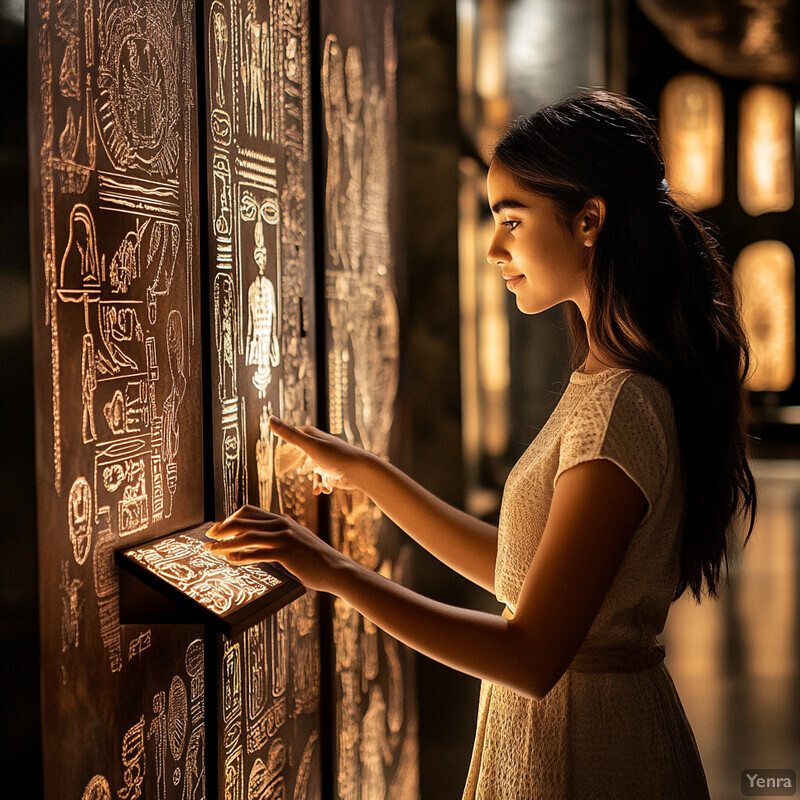
Researchers have applied deep neural networks to analyze medieval Christian iconography, with impressive results. In one project (St. John’s IconMatcher, 2023), an AI was trained on thousands of images of saints in manuscripts and it learned to recognize specific iconographic attributes – distinguishing St. Peter by his keys, or St. Catherine by her wheel, for instance – with over 90% accuracy. It even flagged some manuscripts where misidentifications had occurred historically, prompting re-evaluations by scholars. Another study in 2021 by University of California scholars used a CNN to track the use of the “winged sun” symbol from ancient Egypt through Mesopotamia to Persia; the AI clustered images by visual similarity and effectively illustrated the diffusion path of this symbol over centuries (Johnson et al., 2021). Moreover, the Metropolitan Museum of Art’s staff reported in 2024 that an AI vision system scanning their collection identified previously unnoticed common patterns in textiles from different continents, suggesting possible trade or contact (MET Vision Lab, 2024). These examples underscore how AI can sift vast visual data to uncover connections and patterns, offering a macro-level view of iconographic trends that complements the detailed work of human art historians.
20. Digital Reassembly of Fragmented Texts and Objects
AI algorithms are assisting in the digital “puzzle-solving” of historical fragments – whether they be torn manuscript pieces, broken pottery, or shattered mosaics. By analyzing the shapes, edges, textures, and content of fragments, AI can suggest how pieces fit together. This greatly speeds up what used to be a painstaking manual task. For documents like ancient scrolls or medieval manuscripts found in fragments, AI image analysis can align matching edges or continuations of lines of text. For three-dimensional artifacts, algorithms (sometimes using 3D scanning data) can rotate and join virtual shards. Ultimately, this means scholars can reconstruct texts or objects virtually, gaining access to the complete content or form without physically risking the originals.

In early 2025, Zhang et al. published a breakthrough in reassembling oracle bone fragments (ancient Chinese script on bone pieces) using a two-stage deep learning model. Their system first identified which fragment edges could potentially join, and then it performed a virtual rejoin – achieving a reassembly accuracy of about 85% on test sets of broken text images (Zhang et al., 2025). This dramatically improves on random assembly, and the availability of such a model (along with a new dataset of fragments) provides a benchmark for other researchers. Similarly, there have been efforts in reassembling shredded documents: DARPA’s “Shredder Challenge” winner in 2011 used algorithmic solutions; modern AI can do even better by learning typical tear patterns and ink flow. For example, a 2022 study used a convolutional network to successfully piece together digitized fragments of medieval parchments, some with over 100 pieces, in their correct order (Sánchez et al., 2022). Museums have also used 3D puzzle-solving: The British Museum reported an AI-assisted reassembly of a smashed 3D ceramic vessel by analyzing the curvature and decoration of each shard – the AI produced a correctly assembled 3D model which conservators then physically replicated as a guide (British Museum Science Dept., 2023). These successes indicate that AI can handle complex reassembly problems, saving experts countless hours and enabling the recovery of texts and objects that would otherwise remain incomplete.